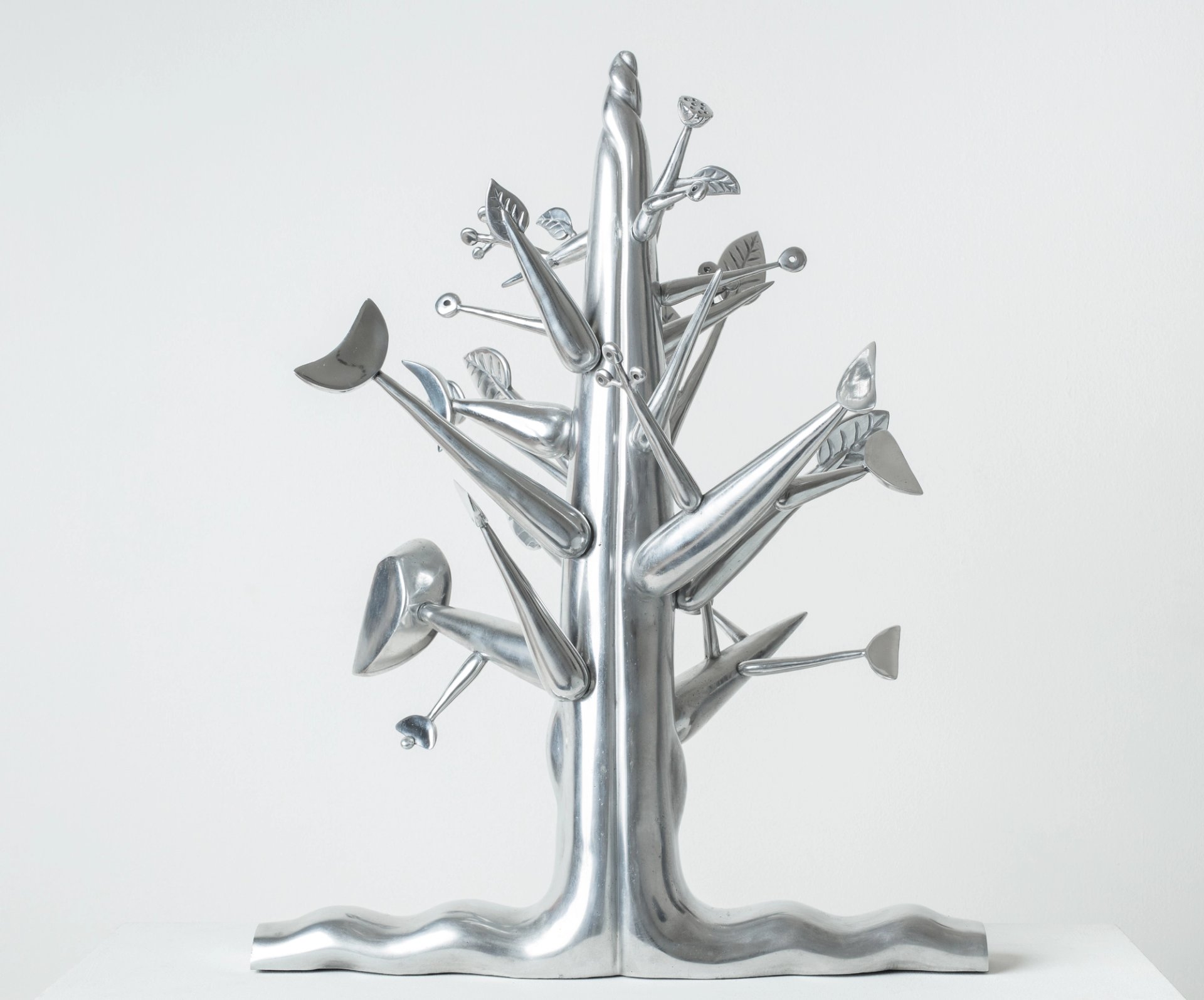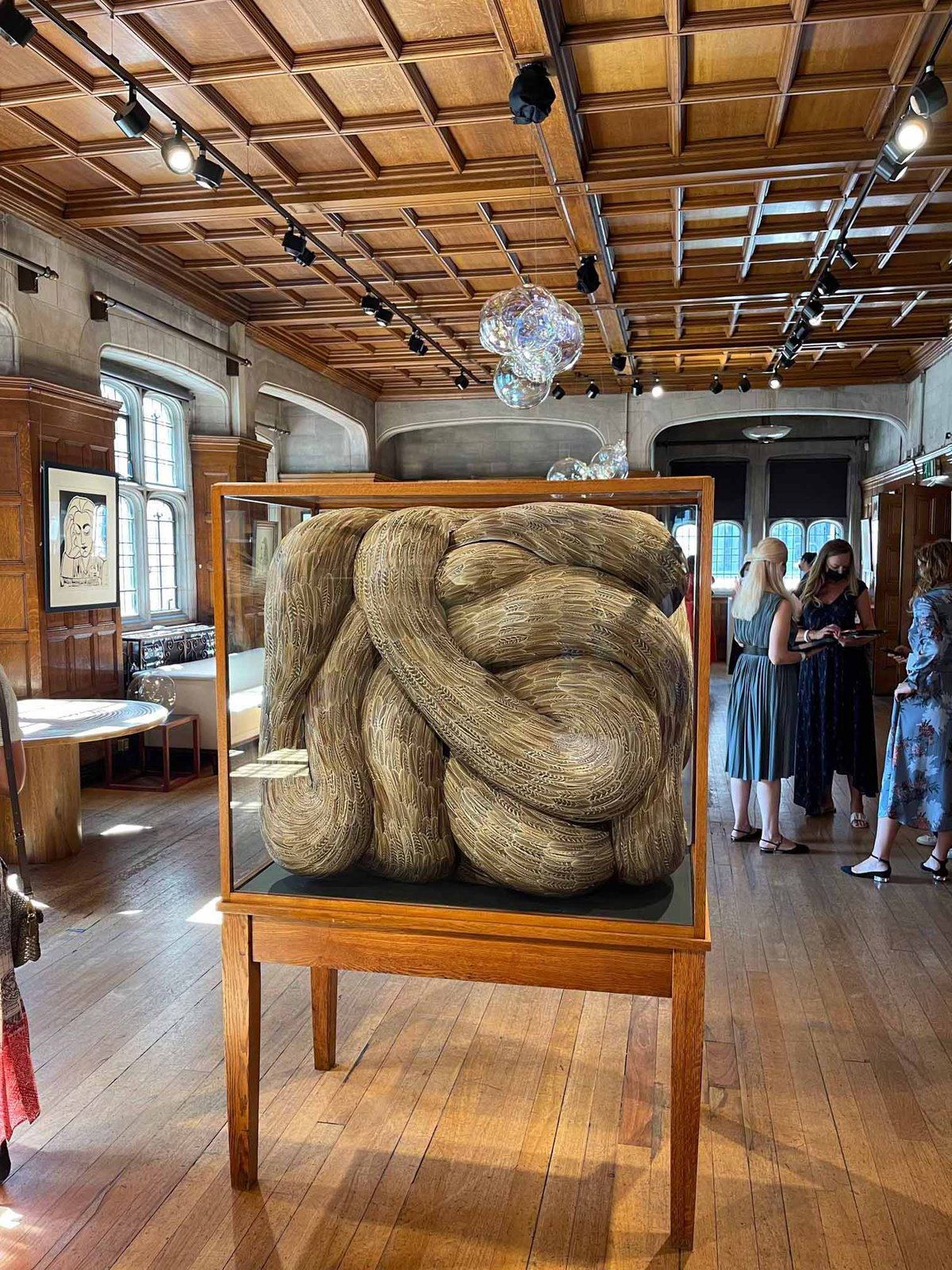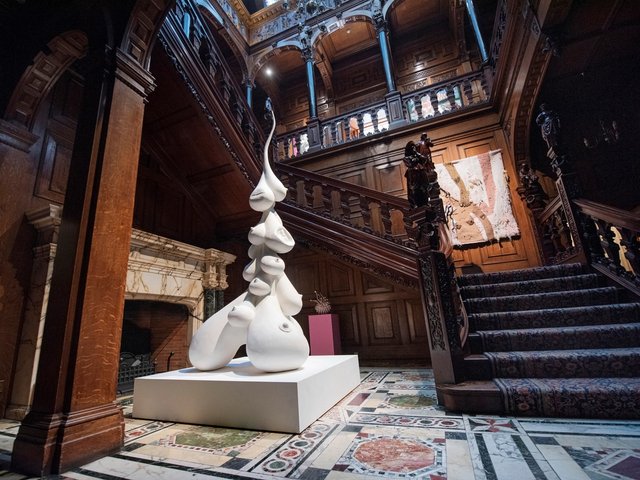Eye of the Collector, a new type of art fair helmed by former Masterpiece chief executive Nazy Vassegh, finally sees the light this week (8-11 September). This twist on the usual fair model is one of the first trade events out of the blocks in the wake of the pandemic. Works presented by 30 international and UK dealers are dotted around Two Temple Place, a handsome Gothic Revival mansion on the Thames built for the US businessman William Waldorf Astor in the 1890s.
Visitors wind their way around the plush wood-panelled property, perusing works dating from antiquity to today which could all have been amassed by a discerning, fictitious private collector. “I came up with the concept in 2019,” says Vassegh, an art advisor. “I was keen to do something that extended what I do for my private clients and push the boundaries of collecting. There was a lot of fair fatigue at the time [pre-pandemic]; I wanted to show that collecting can take place across different periods and categories.” Price points range from £1,000 to £3m and exhibitors pay a set fee to take part.
Vassegh has worked closely with the participating dealers, carefully creating “dialogues” for the inaugural edition. In the downstairs room, a torso of Bacchus (1st-2nd century AD) available with the London and New York-based Ariadne gallery (£325,000) complements a Four Part Fragmented Crack bronze sculpture by the London-based artists known as Based Upon (£150,000).
On the stair landing, sculptural installations made from loose change by the Ghanaian artist Yaw Owusu (Nothing Left Undone, 2021, £13,500 with Gallery 1957) hang alongside works by Bob & Roberta Smith and US artist Khaleb Brooks, both available via Gazelli Art House of London.

Ibrahim El-Salahi's Meditation Tree (2018) Courtesy of Vigo Gallery
Dealers are embracing the fair ethos. “I wanted to support something new,” says Rhonda Long-Sharp of Indianapolis who is showing 18 works including Keith Haring’s Untitled (1984, $480,000) sumi ink on paper piece and a 1986 screenprint by Andy Warhol, Sitting Bull ($60,000).
“Nazy and Natalie Laverack [fair director] are trailblazers; I gave them access to our inventory,” she says. Asked about collector appetite, Long-Sharp adds: “People have been at home. Now, they have disposable income and want to buy beautiful things.”
Long-Sharp co-represents the UK-based mother-and-son artist duo Spiller & Cameron with London’s Vigo Gallery. “We decided to collaborate, not compete, in our representation of them at Eye—they brought a painting and we brought one in order to show our unified representation. Both works presented at Eye of the Collector sold on preview to two different collectors,” she says. Vigo Gallery is showing the duo’s work Moroni, 2021 (£6,229) along with Belgian artist Bram Bogart’s 1959 Agglomeration painting (£125,000).
“I’m used to working at fairs with booths, so having the fair as a curated group exhibition is a new experience. It is experimental, but looks fantastic and there are some great pieces here,” says George Lionel Barker of Gazelli Art House, which is also showing a rare painting by the overlooked Abstract Expressionist artist Perle Fine (Cool Series #18, Deceptive Beat, around 1961-63, £70,000). Online business earlier this year was “very strong”, he says, but real-life events are essential for meeting emerging and established collectors.
Art advisor Catherine Shearn of Vertigo Art Projects said on Instagram that the no-booth layout is “refreshing… a really interesting hang in an incredible setting”. A London-based collector, who preferred to remain anonymous, said the “lack of labels was a little confusing [QR codes provide gallery and work information]. But the whole thing is a pleasure—when was the last time you thought that about a fair? Life has changed, fairs should too.”
The concept of seeing works within the context of an apartment has also been developed by the French art advisor Laurence Dreyfus who launched the Paris-based Chambres à Part initiative in 2006, whereby visitors view works placed around a high-end flat in the Trocadéro district.



